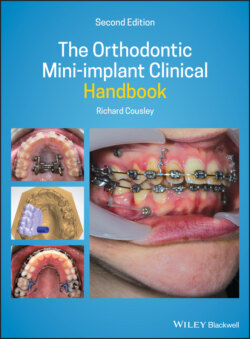Читать книгу The Orthodontic Mini-implant Clinical Handbook - Richard Cousley - Страница 9
Preface to Second Edition
ОглавлениеIn some respects, it seems relatively early for a second edition to be published seven years after the first one. However, the subject of mini‐implants in orthodontics is a dynamic and rapidly evolving field in terms of research publications, clinical techniques, collective comprehension and clinical insight. Some of these refinements appear subtle, but nevertheless represent clinically significant refinements in both our comprehension and applications. Therefore, this second edition has arisen from the realisation that both experienced orthodontists and those new to mini‐implant anchorage will benefit from an updated appraisal of this progressive field and its ever‐increasing applications in clinical orthodontics.
For example, our understanding of the nature of three‐dimensional control of target tooth movements has greatly increased in the last 10 years. This has resulted from the initial recognition and then comprehension of biomechanical side‐effects observed during the early years of mini‐implant usage (and described in Chapter 1). This increased understanding has been matched with the introduction of relatively simple but effective clinical adjuncts such as powerarms (as described in Chapters 7 and 9). These have greatly enhanced our biomechanical control of anterior and posterior tooth movements. Consequently, we are now much more able to control not only anchorage but the delivery of bodily tooth movements in all three dimensions. However, it is important to acknowledge that mini‐implants do not provide ‘miracle’ solutions since orthodontics still has to overcome biological limitations such as the severe alveolar bone deficiencies in hypodontia cases (discussed in Chapter 9).
Over the last 10 years, existing clinical techniques have been refined, and become more standardised and evidence based, as exemplified by protocols for molar intrusion in the treatment of anterior openbites (Chapter 10). The outer envelope of achievable orthodontic treatments has also been further expanded. This is amply illustrated by the inclusion of a new chapter in this edition on mini‐implanted anchored maxillary expansion (Chapter 13). Last, but not least, orthodontic diagnostic imaging options have changed dramatically in recent years with the dissemination of lower dose cone beam computed tomography (CBCT) machines and software. This has had a positive impact on the use of mini‐implants with the introduction of 3D imaging and planning techniques (described in Chapter 5).
However, one key theme has been continued from the first edition. The second edition still provides a combination of pragmatic clinical advice on common orthodontic clinical problems, based on a synthesis of the literature evidence base, judgement, experience and clinical insight. Therefore, I hope that you enjoy reading this textbook and that I have done service to my orthodontic peers and, indeed, to Sir Isaac Newton, the physics‐based father of anchorage concepts.
Richard Cousley
2019
